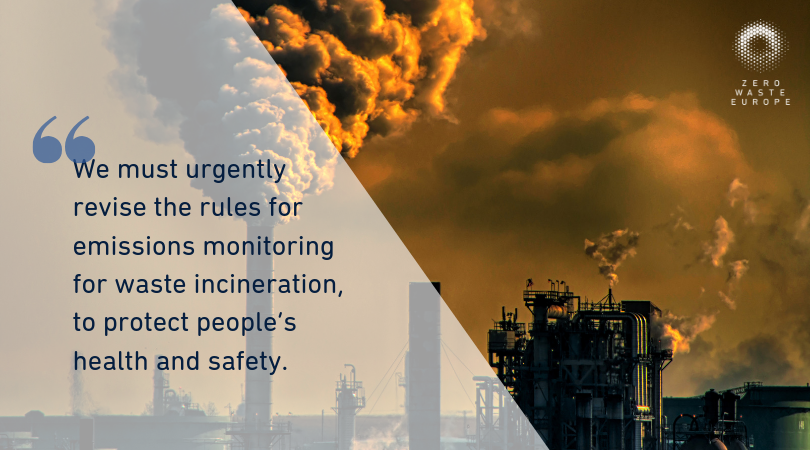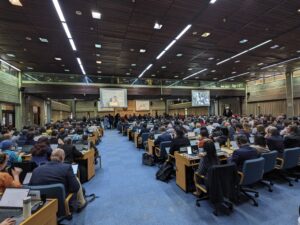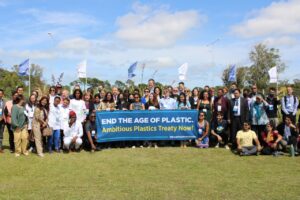The story of REC: The hidden emissions of the youngest Dutch incinerator

The youngest of Dutch incinerators: Reststoffen Energie Centrale (REC) is one of the 13 waste incinerators currently in operation in the Netherlands. The waste–to-energy plant is located in Harlingen, bordering the UNESCO Wadden Sea coastline in the North of the Netherlands. When it was built in 2011, it was proudly announced by the Dutch Ministry of Economic Affairs as “a state of the art” installation, the best in Western Europe.
“Although presented as state of the art, the youngest incinerator in the Netherlands is far from a clean: long-term tests reveal emissions of dioxin, furan and persistent organic pollutants far beyond the limits. The case of the REC plant raises important questions for future policy-making concerning waste incineration and its potential effects on public health and the environment.”
However, long-term testing revealed the plant emits dioxin, furans, and toxic pollutants far beyond the limits set by EU laws. Initially, in order to deliver energy to the nearby salt industry plant, the REC incinerator was only supposed to burn Frisian household waste. However, nowadays the waste input comes from everywhere in the Netherlands. Besides household waste, the REC waste input includes also industrial waste, digestate and sewage sludge.
In November 2018, Zero Waste Europe and Toxico Watch released a case study, revealing how even state of the art incinerators emit dangerous pollutants far beyond EU toxic emissions limits. The report stated that the dioxin emissions of the REC incinerator were underestimated and not exceptional, as they frequently went far beyond the limits set by the environmental permit (0,01 ng TEQ/Nm3). On top of that, the study also exposes how breaches have been hidden thanks to non-reliable testing which seriously understated the emissions level. The local community reacted and citizens, led by the association Stichting Afvaloven Nee Foundation sued the REC for its toxic emissions.
In May 2019, the Dutch Council of State – the highest administrative court of the Netherlands – stated that the management of the waste to energy plant REC has incorrectly applied the provisions concerning the measurement of toxic emissions*. The provisions are incorrectly applied for all substances. The court’s ruling only relates to the emission of hydrochloric acid. Indeed, in order to keep these excessive emissions hidden, the REC bluntly subtracted by default 4 mg/Nm3 from the annually average values. The ruling of the Council of State implies that the incinerator has emitted thousands of kilos of toxics against the annual emission reports for many years, and maintains that national public authorities should have addressed the plant and its hidden emission.
Experts still doubt that the REC will be able to reduce hydrochloric acid emissions in the near future, highlighting that the practice of hiding excessive emission doesn’t appear to be an isolated case, but a common practice among waste incinerators in Europe.
“The short term sampling of emissions currently required by the EU shows serious shortcomings and allows hidden emissions. We must urgently revise the rules for emissions monitoring for waste incineration, to protect people’s health and safety”.
More and more people worldwide are acknowledging the impacts of waste incineration, which are even more severe on low income communities. Indeed, GAIA has recently released a report from the Tishman Environment and Design Center at The New School in New York City showing that among the 73 incinerators that remain in the U.S., approximately 8 out of 10 are located in poorer communities, that are already overburdened by pollution from other industrial sources, causing cumulative impacts that regulators fail to take into account when setting emissions limits. One thing that the report makes abundantly clear is that government regulations and enforcement are not doing enough to protect people from the consequences of incineration, in terms of both prevention and monitoring.
In this perspective, the results of the REC incinerator case raise important questions for future policy-making concerning the safety of waste incineration, a practice that puts public health and the environment at stake while exacerbating climate change. Europe has now the opportunity to support more sustainable alternatives, while investing on reducing waste in the first place.
Read more about the report by ToxicoWatch here and download our case study here!
* The subtraction of ‘measurement uncertainty’ as stated in Annex VI, Part 6, section 1.3 and Part 8, section 1.2 of the IED, the Directive 2010/75/EU on Industrial Emissions
Resources:
Zero Waste Europe and TOXICOWATCH case study: Hidden emissions – A story from the Netherlands
Report: TOXICOWATCH: Hidden Emissions of hydrochloric acid
Article: Measurement uncertainty and Hidden Emissions of hydrochloric acid
GAIA Report: U.S. Municipal Solid Waste Incinerators – An Industry in Decline


